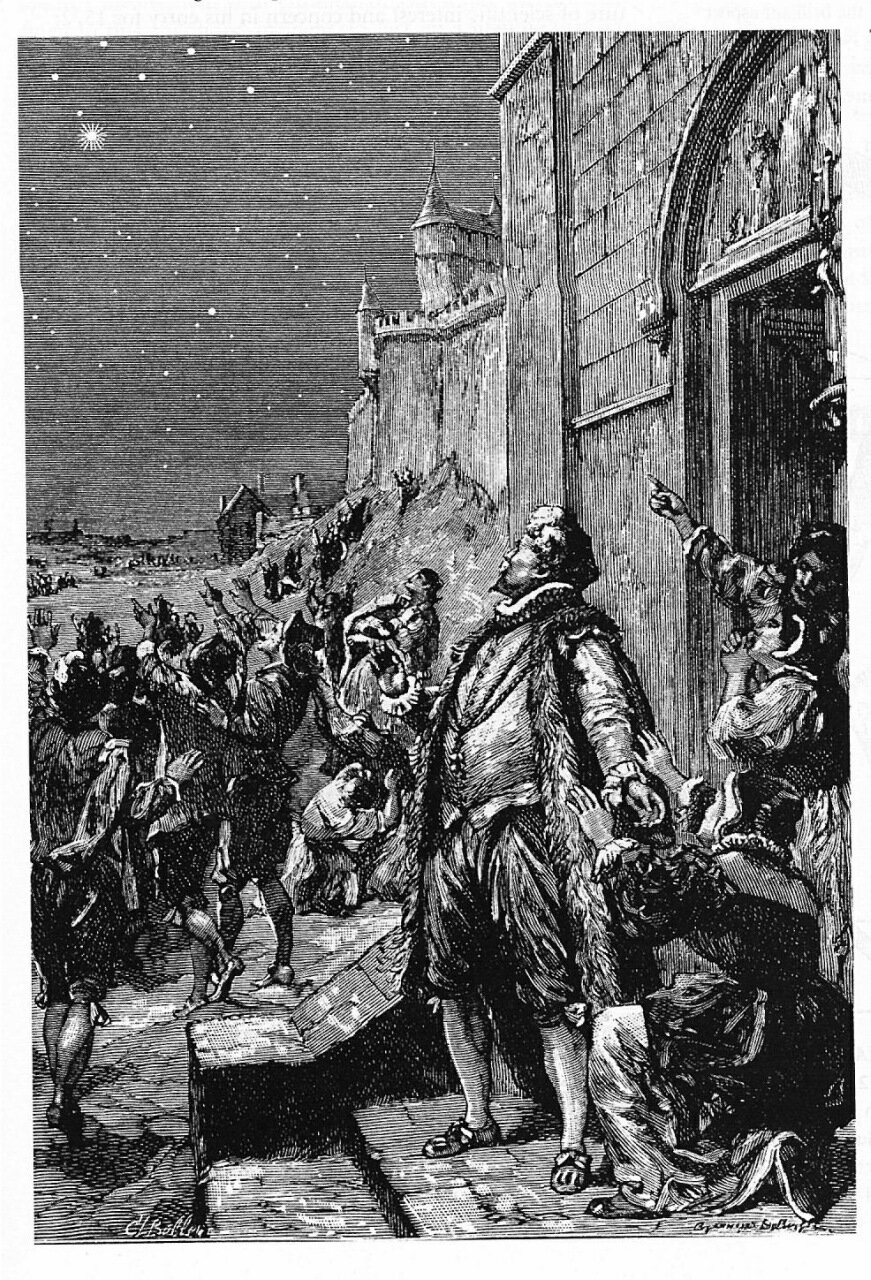JohnD wrote:Gosh, in my ignorance it's not often I can correct Ann, but surely that star exploded 11300 years ago? (11K LY away, first seen, noticed or not on Earth, 300 years ago)
That's a good point, John, and it is certainly correct as far as it goes. In a way we could argue that when it comes to the Milky Way, we should be more careful in determining when supernova explosions "really" happened. Indeed the massive star that became the supernova remnant of Cas A would have exploded some 11,000 years ago, but its light only reached the Earth about 300 years ago. And the fact that the supernova explosion wasn't actually observed on the Earth at the time when it would have been possible to see it here is further argument that we should talk about the supernova as being 11,000 years old, not 300 years old.
Tycho Brahe's Supernova of 1572. Or should it be the supernova of 7,428 B.C.?
Illustration: Camille Flammarion.
However, in the cases when we know when the light from the supernova reached the Earth, it is usually a very bad idea to ignore the "detection date" in favor of the "actual explosion date". Consider "Tycho Brahe's supernova" that was discovered in 1572. It was not Tycho himself that detected it, but it has been named after him because he was able to show that the object was a "new star", farther away than the then-known planets of the solar system. We still don't know exactly how far the remnant of this supernova is - according to
Wikipedia, the distance to it is believed to be between 8,000 and 9,800 light-years - and therefore we can't say how many years the light echo of the supernova had to travel before it reached the Earth in 1572.
Similarly, what about supernova 1987A in the Large Magellanic Cloud? According to
Wikipedia, the actual supernova explosion took place in the large Magellanic Cloud approximately 168,000 light-years away, and if we consider that distance to be quite exact, then the light from the supernova traveled for 168,000 years to reach the Earth, and it actually exploded in 166,013 B.C. But surely it is our 1987 detection of it that is important to us here on the Earth, not its ~166,000 B.C. explosion date?
However, Cas A is a special case, since the actual explosion was never observed on the Earth. So I'll be fine with you calling it the 9,300 B.C. supernova, John!

And I also thought, how can "the expanding debris cloud spans about 15 light-years" be right when we in our terms it's only had 300 years to expand. Is the Wiki correct then, in that there must have been prior explosive/ejection events?
It is a known fact that many supernova progenitors undergo (major) ejection events before they go supernova. This could certainly have happened to the progenitor of Cas A.
Ann
 Cooling Neutron Star
Cooling Neutron Star

